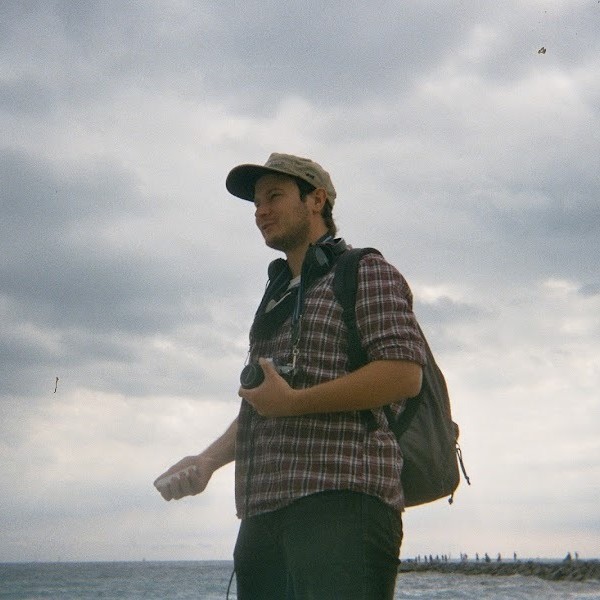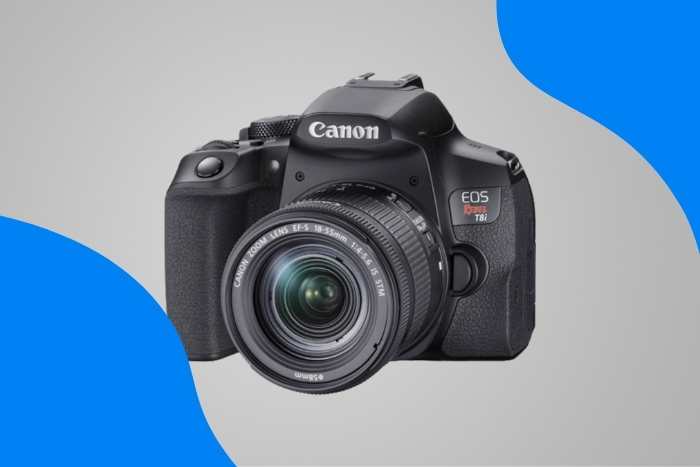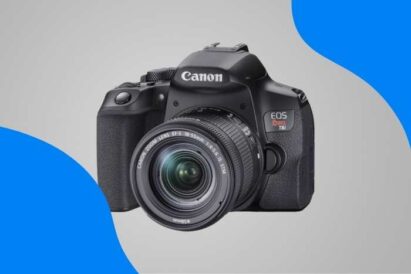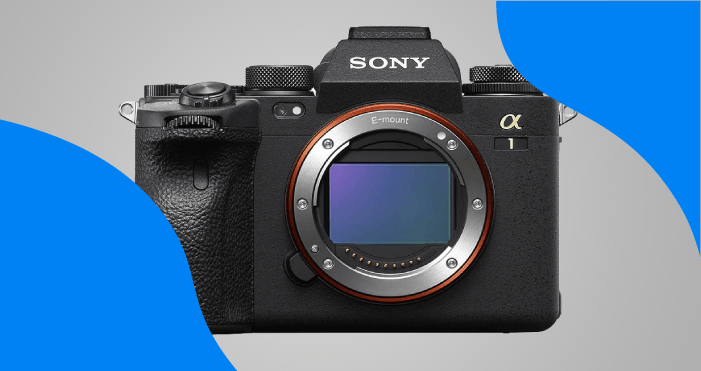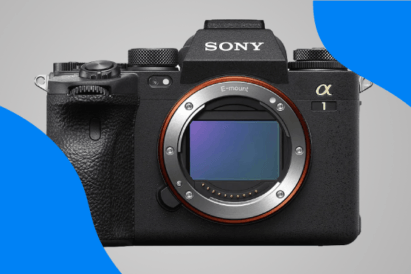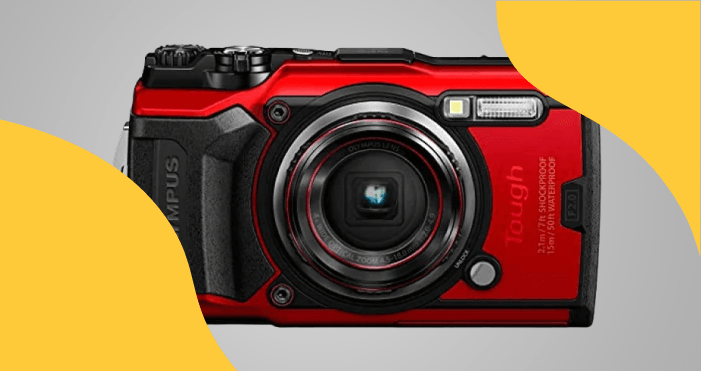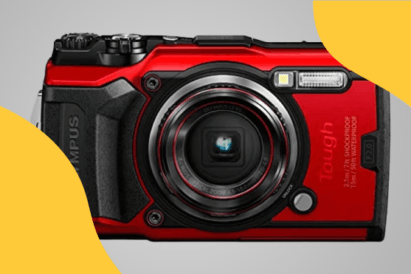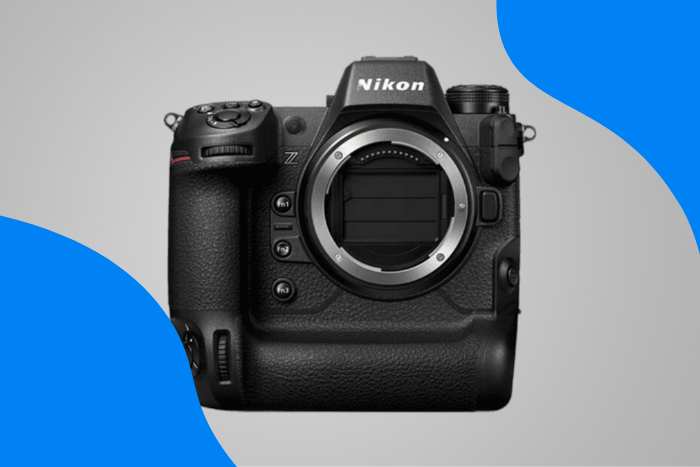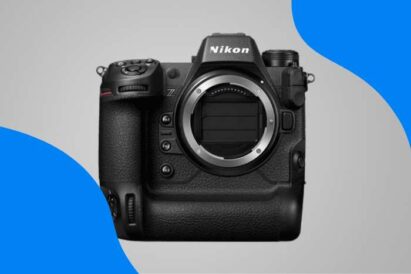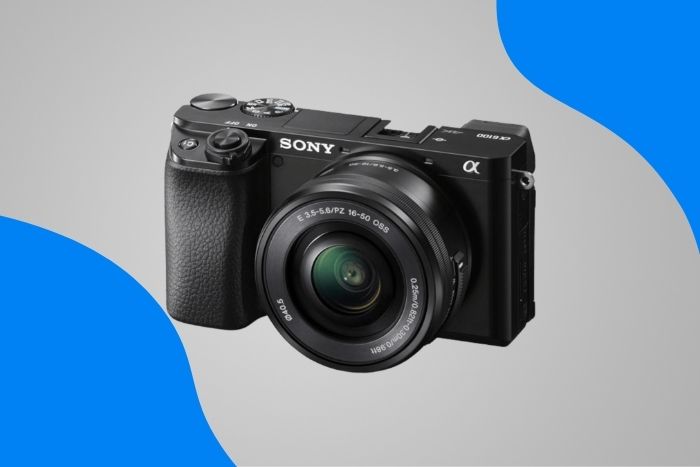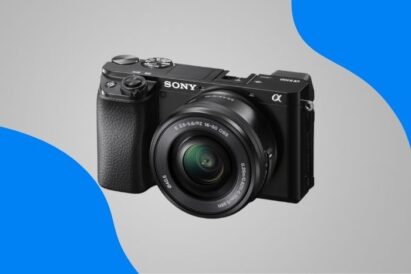Established artists will tell you… having the best camera for artwork photography is important! Every artist needs a good digital camera as part of their equipment. It can be a camera for photographing artwork or fine art photography. A good digital camera is vital.
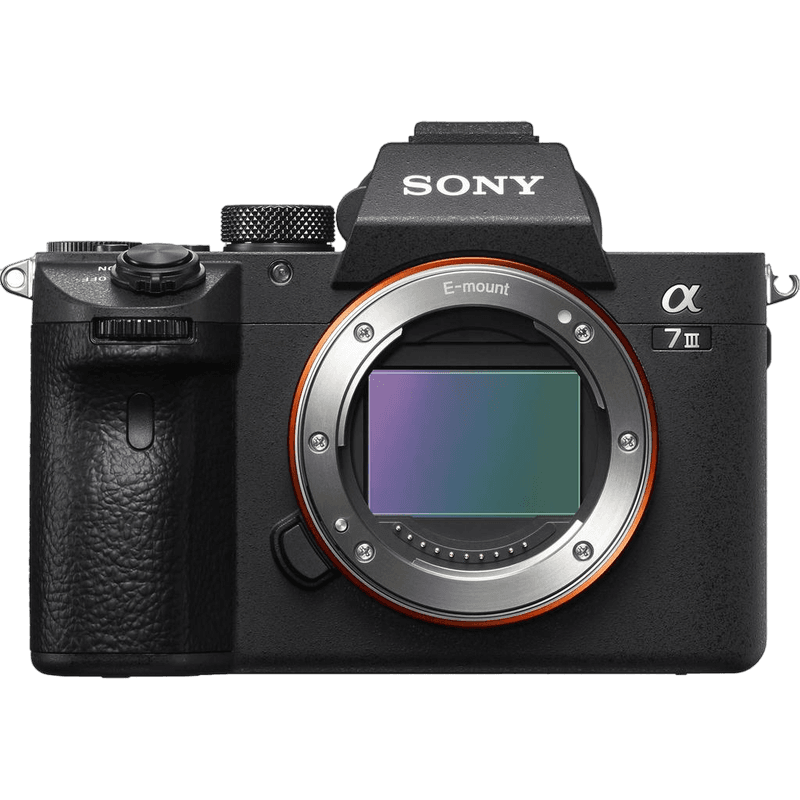
Sony a7 III
Our list has the best digital cameras for artwork photography. We selected these cameras because of their specs and features. And each one meets the needs of certain artists. We include different types of cameras. So any artist can find the perfect camera for their artwork photography!
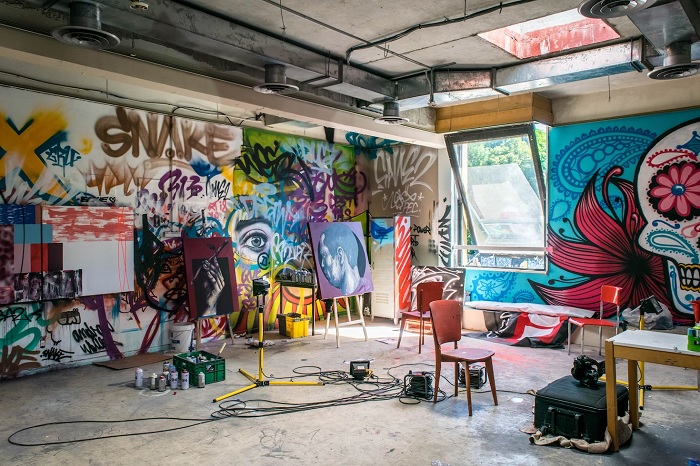
What is the Best Camera for Artwork Photography?
Photographing art isn’t easy. It requires skill and patience. And you need a camera that’s up to the job. You want your work to look its best. So you need high-quality images.
Fine art photographers also need images of the highest quality. That’s why every artist needs a camera for photographing artwork.
Other features are also important when taking photos of artwork. You need to look at the ISO range. Image stabilisation is another handy feature. And you should think about whether you want a DSLR or mirrorless camera.
If you need more information on cameras for artwork photography, skip to our Buyer’s Guide at the end. We have all the info you need to make the best choice. You’ll be able to find the best camera for artwork.

- Excellent sensor with outstanding image quality
- 50 ISO setting for higher quality images
- 5-axis image stabilisation built-in
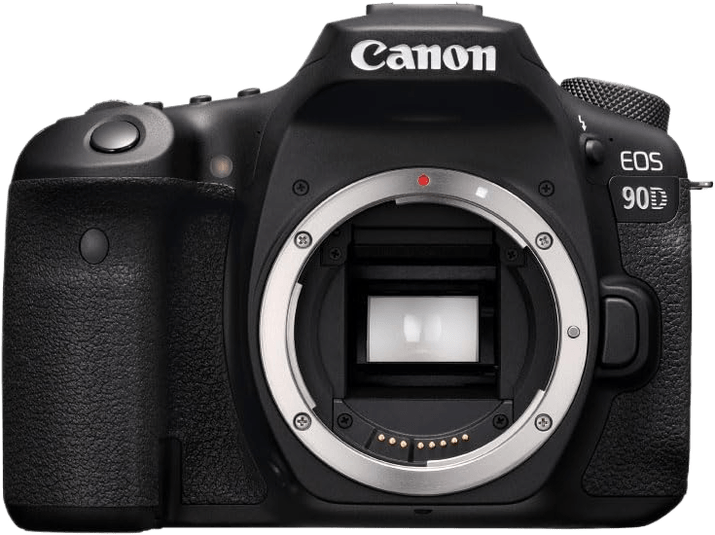
- Powerful 32.5 MP APS-C sensor
- Fantastic low-light performance and dynamic range
- Long-lasting battery life
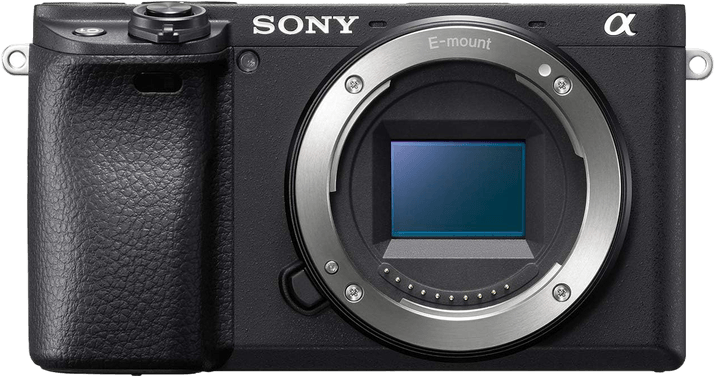
- Compact, lightweight, and affordable
- Fabulous quality images in RAW format
- Wide range of Sony E-mount lenses to choose from
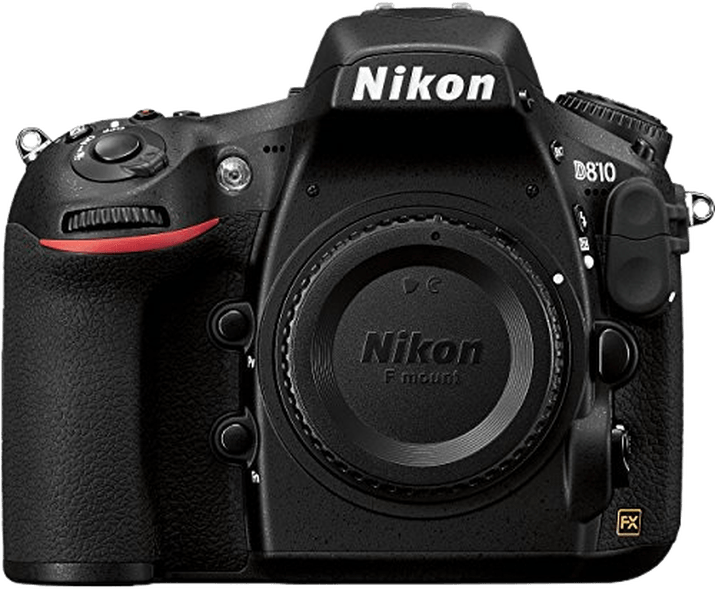
- 36.3 MP full frame sensor for outstanding images
- ISO range is expandable down to 64 ISO
- Dual card slots for extra memory
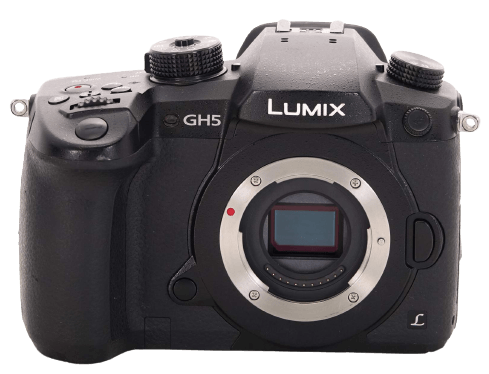
- Brilliant features for photos and videos
- Powerful MFT sensor
- 4K video at 60 fps
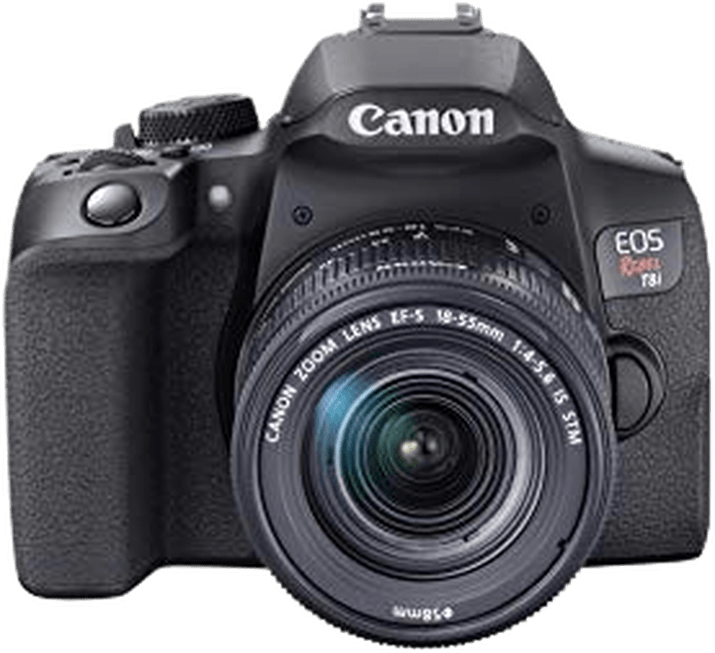
- Excellent image quality for entry-level camera
- Good low-light performance
- Camera can be used as a webcam for streaming
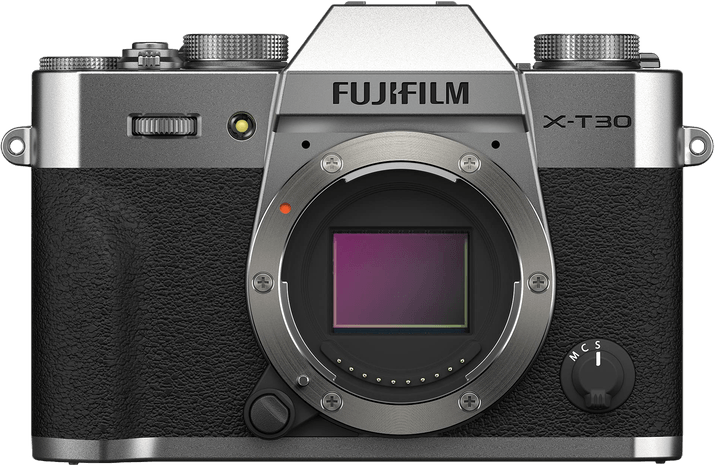
- Stylish camera body
- Powerful 26.1 MP APS-C sensor
- 100 and 80 ISO settings
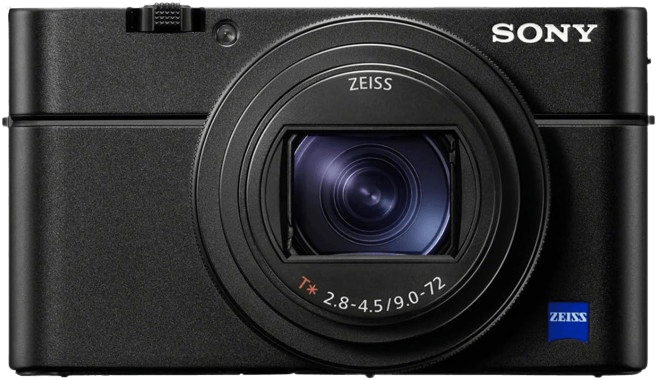
- Excellent image quality for a compact camera
- Brilliant Zeiss fixed lens with 8x zoom
- It's full of multimedia features
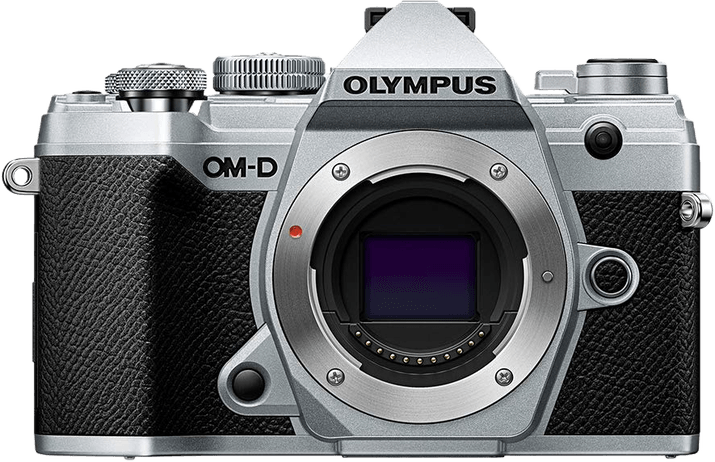
- Compact and lightweight camera body
- 50 MP High-Res Shot mode
- Built-in 5-axis image stabilistion
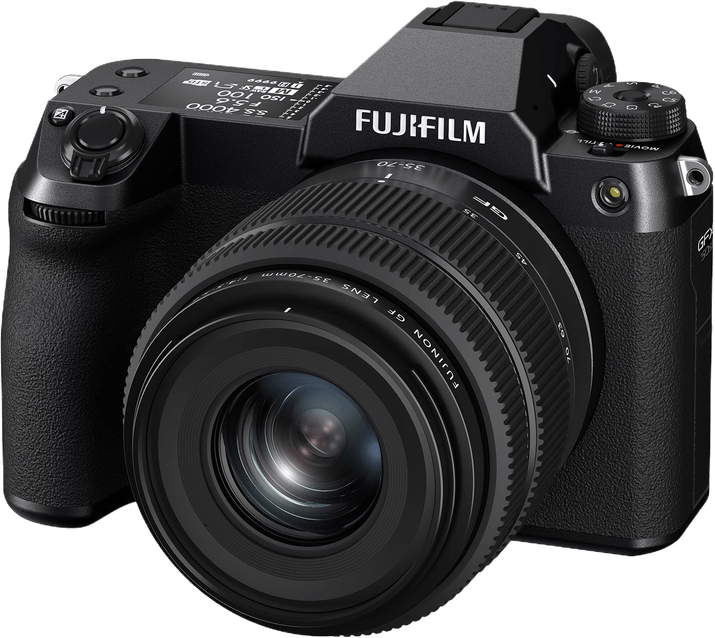
- Incredible 51.4 MP sensor resolution
- Built-in image stabilisation
- Unbeatable dynamic range
10 Best Cameras for Artwork in Detail
A camera for artwork photography needs good image quality. So we take you through the best cameras for photographing artwork. We look at each digital camera in detail.
And we’ll highlight the specs that make them the best cameras for art photography. We lay it all out so you can make an educated decision.
1. Sony A7 III - Best Camera for Artwork Photos

| Camera Type |
Camera Type
|
| Megapixels |
Megapixels
24.2 MP |
| Sensor Format |
Sensor Format
|
| Sensor Size |
Sensor Size
23.8 x 35.6 mm
|
| Frame Rate |
Frame Rate
10 fps |
| Autofocus Points |
Autofocus Points
693 |
- Quick and accurate 693-point AF
- Wide ISO range with a low 50 setting
- Outstanding dynamic range and low-light performance
- Records stunning 4K video and has live stream capabilities
- Noise reduction can remove details
- Front heavy with big lenses
- Menu system is difficult to get used to
Sony has become one of the big hitters in digital cameras. That’s largely down to their range of mirrorless cameras. The Sony A7 III is one of the best models in their mirrorless range.
It’s a full frame camera that delivers incredible images and media. The Sony A7 III is the perfect camera for art photography.
The Sony A7 III is a full frame digital camera. The sensor has a resolution of 24.2 MP. That isn’t record-breaking for a full frame mirrorless camera. But the images the camera produces are stunning.
A BIONZ X image processor powers it. And the larger sensor gives you an increased dynamic range. So it picks up every detail in any artwork.
The excellent ISO range also contributes to the quality of the photos. You have a high ISO range for low-light situations. This is handy for shooting in galleries. And it gives more freedom to fine art photographers.
The 50 ISO setting is ideal for taking pictures of artwork. The colors and details will be bright, vibrant, and true.
The Sony A7 III also has 5-axis image stabilisation. This system ensures sharp images by reducing camera shake. You might not think this is important if you’re using a tripod. But it can still help improve image quality.
Your camera can still show small signs of shake on a tripod when you click the shutter. The stabilization system ensures great image quality every time.
The electronic viewfinder (EVF) is excellent. It has 2.35M dots to give you a bright and accurate representation of your image. And the vari-angle screen is another handy feature for art photography.
You can tether the camera to your computer using the ports. Plus, the camera has built-in Wi-Fi connectivity for easy file transfers.
The autofocus system is fantastic. But you won’t need it for photographing artwork. We recommend you use manual focus for that job.
Yet the autofocus makes the Sony A7 III a superb camera if you want to shoot other things as well as art photography. Versatility is important for professional photographers.
2. Canon EOS 90D
Best APS-C DSLR for Artwork
no

| Camera Type |
Camera Type
|
| Megapixels |
Megapixels
33 MP |
| Sensor Format |
Sensor Format
|
| Sensor Size |
Sensor Size
22.3 x 14.9 mm
|
| Frame Rate |
Frame Rate
10 fps |
| Autofocus Points |
Autofocus Points
45 |
- Excellent 32.5 MP APS-C sensor
- Dual Pixel AF with eye detection
- Decent frame rate of 10 fps
- Good, 1,300-shot battery life
- Live View and 4K/30p Ultra HD video
- Unreliable autofocus when using the optical viewfinder
- 4K video has a soft focus
- No in-body image stabilization
- Limited video codecs and frame rates
The Canon EOS 90D is one of the best APS-C cameras. It’s a powerful DSLR camera that creates stunning images. The sensor size and usability make it a fantastic enthusiast camera.
But the performance also makes it a viable DSLR for professional photographers. It’s the best Canon camera for photographing artwork.
We start with the high-resolution sensor. It gives you a pixel count of 32.5 MP. Finding an APS-C sensor with anything above 25 MP is impressive.
But 32.5 MP is another level of image quality. The dynamic range is excellent. And the detail and color rendition are superb. It’s exactly what you need to photograph art.
The ISO range gives you plenty to work with. You have a max setting of 25,600 ISO for low-light shooting when you’re out and about. Then you have the low setting of 100 ISO for art photography. That gives you fabulous detail.
The EOS 90D has a fantastic optical viewfinder. It gives you a true view of your artwork. And the vari-angle screen has an excellent range of motion. That helps when you take photos of the artwork from above or at difficult angles.
You can easily connect the camera to your phone using Wi-Fi connectivity. You can also use the camera remotely from your phone. That means you can press the shutter without disturbing the camera.
You also get 4K video recording and a 10 fps burst mode. That perhaps won’t help with art photography. But it’s a good camera for taking recordings and pictures of your artmaking.
The battery life is also impressive. You don’t have to worry about charging it often. It’s a well-rounded machine. So the Canon EOS 90D is the best DSLR camera for photographing artwork. It is an upgrade from the cheaper 80D model, and you can see the Canon 90D vs 80D comparison for more details!
3. Sony a6400
Best APS-C Mirrorless for Artwork
no

| Camera Type |
Camera Type
|
| Megapixels |
Megapixels
24.2 MP |
| Sensor Format |
Sensor Format
|
| Sensor Size |
Sensor Size
15.6 x 23.5 mm
|
| Frame Rate |
Frame Rate
11 fps |
| Autofocus Points |
Autofocus Points
425 |
- Superb image quality for APS-C
- Good low-light performance
- Compact camera body
- No time limit for recording video
- No in-camera RAW image editing
- No in-body image stabilization
- Screen tilts but no further articulation
- Complicated menu system
The Sony a6400 is one of Sony’s most popular models. You can go for the newer a6600 model. But the Sony a6400 still makes the grade for art photography. It’s a brilliant APS-C mirrorless camera. And it’s an affordable camera too.
It captures quality images and videos. And it delivers for photographers of all kinds. While it may be compact, the Sony a6400 is full of features.
The APS-C sensor has a healthy resolution of 24.2 MP. It isn’t groundbreaking. But Sony pairs the camera sensor with a BIONZ X image processor. Together they produce high-quality images.
You can shoot in RAW format. And you get crisp and clear images with natural colors.
The dynamic range and low-light performance make the Sony a6400 a great camera. You get an excellent top ISO limit of 102,400. And the photo quality is strong.
You won’t experience digital noise until you hit the upper limits. When shooting art, you also have the standard ISO 100 for better image quality.
The camera body is compact and lightweight. It’s ideal if you need to travel to different art studios. And you get an excellent selection of interchangeable lenses. It uses Sony E-mount lenses, so you have plenty to choose from.
There’s 4K video mode and an 11 fps continuous burst mode to capture fast movement. The autofocus is also the best in its division. And you get Wi-Fi connectivity built-in. All these features make it the perfect camera for artists of all kinds.
It gives you quality photos of professional quality. Plus, it’s compact and affordable. The Sony a6400 is a great mirrorless camera for art photography.
See our Sony a6400 vs a6600 or Sony a6400 vs a6100 posts for related specs comparisons!
4. Nikon D810
Best Nikon DSLR for Artwork
no

| Camera Type |
Camera Type
|
| Megapixels |
Megapixels
36.3 MP |
| Sensor Format |
Sensor Format
|
| Sensor Size |
Sensor Size
24 x 35.9 mm
|
| Frame Rate |
Frame Rate
5 fps |
| Autofocus Points |
Autofocus Points
51 |
- Outstanding image quality from the FX-format sensor
- Wide ISO range and great low-light performance
- Fast and accurate AF system that works well in dark conditions
- High-quality pentaprism optical viewfinder
- Sluggish 5 fps max shooting speed at full resolution
- Heavy camera body
- LCD screen isn't a touch screen and there's no screen articulation
- No Wi-Fi connectivity built in
- No 4K video quality, only Full HD
There aren’t many photographers who wouldn’t be happy with a Nikon DSLR camera. And the Nikon D810 is one of their top DSLR cameras. It’s a full frame camera. And it has the power and performance for any professional photographer to use in the art world.
You can expect stunning images from the D810. The camera’s sensor is a full frame FX-format CMOS with no optical low-pass filter. And it has a high resolution of 36.3 MP for superb images.
The color rendering is true to life. And the wide dynamic range gives you great details in light and dark areas.
The ISO range is another strength of this DSLR camera. You don’t have the biggest top end, with a max setting of 51,200. But you can go as low as 64 ISO. That gives you incredible noise-free images. That makes it the best Nikon camera for art.
It shoots RAW format images. And there’s a special feature to shoot 16 MP RAW images. These are smaller RAW files. So you can save space on your SD cards.
The Nikon D810 also has dual card slots for extra storage. That’s a handy feature for photographers with large workloads. The battery life is also long enough for professionals.
The Nikon D810 has a built-in flash. That might be too crude for photographing artwork. But it also has a hot shoe connector for external lighting setups. The downsides include a lack of image stabilisation and a vari-angle screen.
There’s also no Wi-Fi connectivity. But you can use a cable to tether the D810 to your computer. These are inconveniences. But not much more than that. They don’t take away from the powerful images shot with the Nikon D810. It is still one of the best cameras for photographing artwork.
5. Panasonic Lumix GH5
Best MFT Camera for Artists
no

| Camera Type |
Camera Type
|
| Megapixels |
Megapixels
20.3 MP |
| Sensor Format |
Sensor Format
|
| Sensor Size |
Sensor Size
13 x 17.3 mm
|
| Frame Rate |
Frame Rate
12 fps |
| Autofocus Points |
Autofocus Points
225 |
- Smooth 4K video at 60 fps
- Large and bright electronic viewfinder
- Durable, weather-sealed body
- Dual memory card slots
- Large body for a Micro Four Thirds
- No built-in flash
- No USB charging
- Disappointing low-light still performance
Panasonic makes some of the finest hybrid cameras on the market. They are specialists in cameras that produce photos and videos.
The Lumix GH5 is an excellent example of Panasonic’s hybrid philosophy. Not all art photographers need a camera with such versatility. But it’s one of the best cameras for multimedia artists.
The Panasonic Lumix GH5 has a Micro Four Thirds (MFT) sensor. An MFT sensor is smaller than an APS-C and full frame sensor. But you still get excellent images.
The camera has a 20.3 MP resolution. The color tones and details are gentle and authentic. And it’s far superior to any phone camera.
Multimedia artists will love the movie specs. It has brilliant 4K video recording at 60 fps. And there’s the Lumix 4K Photo mode. It lets you take single-frame images from 4K footage. And it gives you a burst of 30 fps.
The 5-axis image stabilisation is another bonus feature when photographing artwork. It counteracts camera shake for super-sharp images. And it even gives you stabilisation when paired with lenses without stabilisation.
The Panasonic Lumix GH5 has a compact and robust body. It’s good for shooting outdoor projects and art installations. And it has all the wireless connectivity you’d expect from modern cameras. The Panasonic Lumix GH5 is the best digital camera for artists who use video.
6. Canon EOS Rebel T8i
Best Beginner DSLR Camera for Artists
no

| Camera Type |
Camera Type
|
| Megapixels |
Megapixels
24 MP |
| Sensor Format |
Sensor Format
|
| Sensor Size |
Sensor Size
14.9 x 22.3 mm
|
| Frame Rate |
Frame Rate
7.5 fps |
| Autofocus Points |
Autofocus Points
45 |
- Excellent image quality
- Face and eye-detection AF
- Great ISO range and low-light performance
- 4K/25p and Full HD/120p video
- Webcam functionality and remote shooting with smartphone
- Fiddly control dials
- Less reliable AF in video mode
- Small optical viewfinder display
- Cropped 4K video
One of the best DSLR cameras for beginners is the Canon EOS Rebel T8i. It has excellent features and produces excellent results. It doesn’t have the resolution of the professional cameras. But the Rebel T8i is an affordable DSLR for budding artists.
It has an APS-C sensor. And the Canon EOS Rebel T8i gives you a solid image resolution of 24.1 MP. That’s outstanding quality for an entry-level camera. And it blows smartphone images out of the water.
You also have a healthy ISO range (100 to 12,800). The low-light performance is good. And you have the standard 100 ISO setting for photographing artwork.
You get a lovely optical viewfinder. What you see is what you get, unlike lesser electronic viewfinders. You also have a handy rotating touchscreen for vari-angle shooting.
The autofocus system is also great. And it has face and eye recognition if you want to shoot artistic portraits. It’s ideal if you’re documenting art and artists.
The Canon EOS Rebel T8i gives you great 4K video. And you can use it as a webcam using the EOS Utility app. That’s an excellent feature for online art tutorials.
The EOS Rebel T8i is one of the best DSLR cameras for beginners. It’s affordable and gives you fantastic images with little previous photography experience.
7. Fujifilm X-T30 II
Best Fujifilm Camera for Artists
no

| Camera Type |
Camera Type
|
| Megapixels |
Megapixels
26 MP |
| Sensor Format |
Sensor Format
|
| Sensor Size |
Sensor Size
23.5 x 15.6 mm
|
| Frame Rate |
Frame Rate
30 fps |
| Autofocus Points |
Autofocus Points
425 |
- Affordable
- High-quality images
- Fast 30 fps with 1.25x crop
- Small and light
- Stylish retro, black-and-silver look
- No in-body stabilization
- Poor ergonomics with longer lenses
- Q button awkwardly positioned
- Rear screen is not fully articulated
Fujifilm mirrorless cameras combine a stylish retro look with modern camera technology. The Fujifilm X-T30 II is a fine example of old-fashioned good looks and modern performance. It delivers the picture quality art photographers need. And it has creative features for different photography endeavors.
The Fujifilm X-T30 II has an APS-C X-Trans CMOS sensor. And it gives you an excellent image resolution of 26.1 MP. That’s a lot of megapixels for a sensor of this size. You can photograph art in accurate detail.
The standard ISO range only gives you a low level of 160 ISO. But you can expand that to 100 or 80 ISO. This ensures you capture paintings in all their glory with little digital interference.
The Fujifilm X-T30 II is a versatile mirrorless camera. It has excellent 4K video recording for video makers. And there’s a 30 fps burst with the electronic shutter.
You also get beautiful built-in filters, including Fuji’s film simulation modes. These might not help capture artwork images, but they give you plenty of creative options. The Fujifilm X-T30 II is one of the best mirrorless cameras for artists.
8. Sony RX100 VII
Best Compact Camera for Artists
no

| Camera Type |
Camera Type
|
| Megapixels |
Megapixels
20 MP |
| Sensor Format |
Sensor Format
|
| Sensor Size |
Sensor Size
13.2 x 8.8 mm
|
| Frame Rate |
Frame Rate
5 fps |
| Autofocus Points |
Autofocus Points
357 |
- Pocket-sized point-and-shoot
- High-quality Zeiss zoom lens with 8x zoom
- Advanced autofocus system with subject tracking
- Excellent 4K video performance
- Microphone jack for audio recording
- Very expensive
- Image quality isn't great
- Not the best low-light performance
- No microphone jack
- No headphone jack
Not every artist needs a big camera for photographing artwork. Some might be looking for something small to document progress in their studio. Or they might want something to capture nuggets of inspiration when out and about. The Sony RX100 VII is the perfect option for those artists.
The Sony RX100 VII is a fantastic compact camera. It uses a small 1-inch sensor. But you get an impressive 20.1 MP of resolution.
The high standard of the images is also helped by the great optical quality of the Zeiss lens. It has a wide max aperture of f/2.8 and optical image stabilisation. These help in low light and with camera shake. The 8x optical zoom is handy too.
It’s hard to find another compact camera with more features than the Sony RX100 VII. It has a superb 4K video option. There’s a 20 fps continuous burst mode to capture quick movement. And it has the best autofocus system of all compact cameras.
It’s an all-in-one machine. And it’s the best camera for an artist’s pocket.
9. Olympus OM-D E-M5 Mark III
Best Olympus Camera for Artists
no

| Camera Type |
Camera Type
|
| Megapixels |
Megapixels
20 MP |
| Sensor Format |
Sensor Format
|
| Sensor Size |
Sensor Size
17.4 x 13 mm
|
| Frame Rate |
Frame Rate
30 fps |
| Autofocus Points |
Autofocus Points
121 |
- 50 MP High Res Shot mode
- 30 fps continuous shooting speed
- Up to 6.5 stops of in-body stabilization with certain lenses
- Excellent weather sealing
- Articulating screen for angled shots
- Excellent 4K Ultra HD and DCI video
- Only 10 fps with AF tracking
- Complicated Olympus menus
- No headphone out
- No video log profile for dynamic range or colors
- An average battery life
The Olympus OM-D E-M5 Mark III is a fantastic Micro Four Thirds (MFT) camera. The smaller sensor means you get a compact camera body. But there’s no compromise in camera performance. It’s the best camera for artists from Olympus.
The MFT sensor has a 20 MP resolution. That won’t set the world alight. But that’s still excellent image quality for amateur artists.
The OM-D E-M5 III also has a trick up its sleeve. There’s a High-Resolution Shot mode. It produces 50 MP images. You need a tripod for this. But it’s the perfect option for photographing artwork.
This MFT camera also has 5-axis image stabilisation. That ensures there’s no blurring on the digital versions of the artwork.
There’s an excellent AF system. The camera has a fantastic 4K video mode and a rapid burst function. And it has easy file transfer and sharing through its Wi-Fi connectivity. The battery life is good too.
The Olympus OM-D E-M5 III is a versatile little camera. And the High-Res Shot mode makes it an ideal camera for artwork photography.
10. Fujifilm GFX 50S II
Best Medium Format Camera for Artwork
no

| Camera Type |
Camera Type
|
| Megapixels |
Megapixels
51 MP |
| Sensor Format |
Sensor Format
|
| Sensor Size |
Sensor Size
44 x 33 mm
|
| Frame Rate |
Frame Rate
3 fps |
| Autofocus Points |
Autofocus Points
425 |
- Fantastic Fujifilm image quality
- 6.5 stops of in-body image stabilization
- Small and relatively light
- Dual-tilt screen for portrait and landscape formats
- Artistic Film Simulation modes
- Unreliable face and eye detection, unavailable in Continuous AF
- Slow contrast-detect autofocus
- Slow 3 fps continuous shooting rate
- No 4K Ultra HD video
- 16-shot stitching only works with a tripod and static subjects
If you’re looking for raw power and resolution, you could look at a medium format camera. They aren’t as versatile as mirrorless or DSLR cameras. But they are the best cameras for outstanding image quality.
The Fujifilm GFX 50S II is one of the best and most accessible medium format cameras. It isn’t cheap by anyone’s standards. And it’s a camera for professional photographers. But it’s an incredible camera for photographing artwork.
The medium format sensor is bigger than a full frame sensor. That means it has space for more megapixels. The GFX 50S II has a whopping 51.4 MP resolution for still images. That gives you images of the highest quality. And the camera gives you a wide dynamic range.
The camera has built-in image stabilisation. And there are filters and film simulation modes. The face and eye detection AF are perfect for professional fine art portraits.
It isn’t a versatile camera. But when it comes to raw image processing, it’s hard to beat the Fujifilm GFX 50S II!
Our Verdict
We selected the Sony A7 III as the best camera for artists. It produces superb quality photos with stunning colors and a wide dynamic range. The quality in detail is unquestionable.
We also list the Canon 90D if you want a powerful APS-C DSLR camera. And the Nikon D810 is a full frame DSLR option. The Sony a6400 and Fujifilm X-T30 II are two top mirrorless cameras for photographing art. And there’s the Fujifilm GFX 50S II if you want more power.

Sony a7 III
Photographing art is a sophisticated process. Capturing art with a digital camera isn’t easy. But life is much easier if you have the best camera for artwork photography. Photographing art is creating a true, digital representation of the artwork. All the cameras on our list can do exactly that.
Buyer’s Guide for Artwork Photography Cameras
Finding the perfect camera for photographing artwork isn’t easy. But we have some extra information to help you find the digital camera you need. We will tell you the specs to look for. And we’ve also got some tips for photographing artwork.
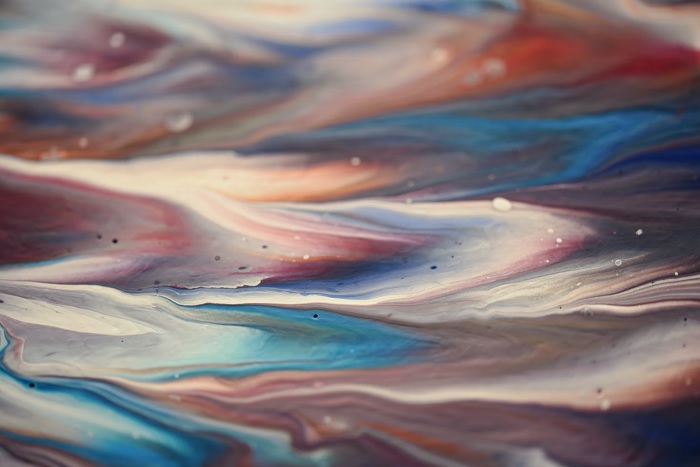
Camera Type and Sensor Size
You’ll need a DSLR or mirrorless camera if you’re a serious artist. Both types are made for serious photography. You can find beginner, enthusiast, and pro types of either type. But they’re all fine for taking photos of art. You can also find good compact cameras if you want something smaller and more convenient.
You also need to think about sensor size. You can get APS-C (crop sensor) or full frame mirrorless and DSLR cameras. Full frame sensors are larger than APS-C. They tend to have a higher resolution. But full frame digital cameras tend to be at the pro end of the scale.
You also have Micro Four Thirds (MFT) cameras. This sensor type is smaller than APS-C and full frame. But you can still get excellent images. Compact cameras have small sensors, often only 1-inch in size. But this might be enough for some art photography.
Image Quality
Image quality is one of the most important factors when looking for a new camera for artwork. You want a true representation of your work. You don’t want poor image quality to take anything away from your masterpiece.
The sensor resolution is the main indicator of image quality. The higher a sensor’s megapixel (MP) count, the better the image quality is. That’s only a general rule. Other factors can influence the quality of your images.
ISO Range
The ISO tells you how sensitive the sensor is to light. A lower ISO setting means it’s less sensitive. And a higher ISO setting tells you it’s more sensitive. But you’re more likely to experience digital noise at higher ISO levels.
Artists should stick to low ISO settings when photographing artwork. A low ISO setting gives you the best image quality. 100 ISO is available on most cameras. But 50 ISO is even better if you can find it.
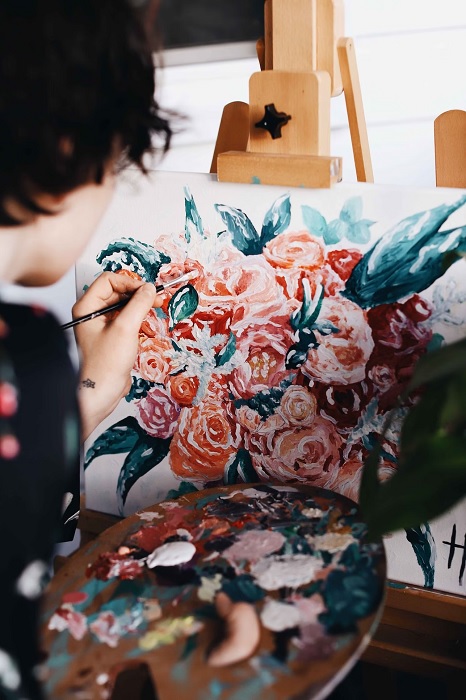
Tips for Photographing Artwork
Photographing artwork isn’t easy. And when done badly, the artwork is only a shadow of its true self. You want the photos to show your art in all its glory. That means you have to do it correctly. You can’t take shortcuts when photographing art.
Here’s an excellent video on the process of photographing art.
Hang Art on a Wall or Flat on the Ground
Hanging your art on the wall is one of the best ways of capturing it with a digital camera. Remove it from the easel and hang it flat against the wall.
Leaning the canvas against the wall won’t do because the art will be at an awkward angle. You want the camera and lens to point at the painting straight on.
Hang the artwork at about head height for the best result in natural light. Window placement in buildings has people standing up in mind. That means the best light is at about eye level.
You can also lay your artwork flat on the ground. Then you can take the photo directly above the image. You can use a tripod that inverts for this technique.
Use Lighting Equipment for Perfectly Even Light
You won’t need extra lighting if you have a studio with plenty of natural light. But you might need reflectors if you only have light from one side. This creates shadows and gives you an uneven digital image. Reflectors help you balance the natural light.
You can also use LED panel lights. You can adjust them to match the natural light you have. Or you can use two of them for even artificial lighting. Place one on either side of the camera, so they face the painting at a 45-degree angle. This will remove unwanted shadows. And softboxes remove glare from lights if you’re shooting oil paintings.
Use a Tripod for Stability
A tripod is vital for photographing artwork. You don’t need one for shooting a gallery or exhibition. But you want the best image quality when documenting individual art pieces. A tripod gives you stability. And it allows you more options with exposure settings (aperture, shutter speed, and ISO!).
You definitely need one for taking photos from above. But this depends on the size of your artwork. The span of the tripod’s legs needs to be larger than your artwork. Or you can use a tripod with an overhead mount.
We hope our guide has helped you in your quest to find the perfect camera. if you require more inspiration try our articles on the best camera for family photography or concert photography cameras next!

